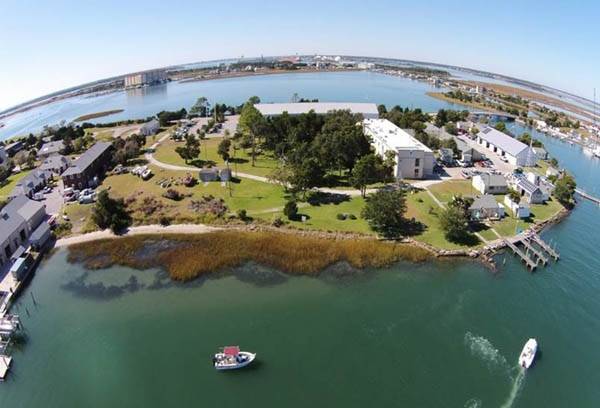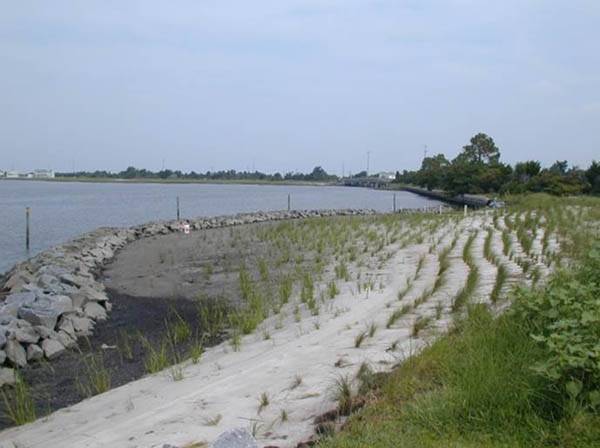Protected and stabilized shorelines can store carbon, promote coastal resilience, improve water quality and fish habitats
“Living shorelines”—protected and stabilized shorelines using natural materials such as plants, sand and rock—can help to keep carbon out of the atmosphere, helping to blunt the effects of climate change, according to a recent NOAA study published in the journal PLOS One.
This study, reportedly the first of its kind, measured carbon storing, or “carbon sequestration,” in the coastal wetlands and the narrow, fringing marshes of living shorelines in North Carolina.
“Shoreline management techniques like this can help reduce carbon dioxide in the atmosphere while increasing coastal resilience,” said Russell Callender, Ph.D., acting director of NOAA’s National Ocean Service. “As communities around the country become more vulnerable to natural disasters and long-term adverse environmental change, scientific research such as this helps people, communities, businesses and governments better understand risk and develop solutions to mitigate impacts.”
Carbon can be stored or “sequestered” in plants when they take carbon dioxide from the atmosphere during photosynthesis. The carbon sequestered and subsequently stored in coastal wetland sediments is known as “coastal blue carbon.” Acre for acre, salt marsh meadows can store two to three times as much carbon of the course of a year as mature tropical forests.
NOAA has supported blue carbon policy and science efforts for several years, with a growing interest in creating and managing coastal wetlands as carbon sinks. NOAA recently announced guidance on the use of verified carbon standards for the creation and restoration of coastal wetlands.
“Research hadn’t focused on whether these narrow strips of fringing marshes could store carbon,” said Jenny Davis, Ph.D., the study’s lead author and scientist with NOAA’s National Centers for Coastal Ocean Science (NCCOS). “But now we know that the added carbon storage benefit of these marshes as part of living shorelines can improve coastal resilience.”
In the study, researchers measured the amount of carbon stored in salt marsh sediments, and compared storage rates in marshes of different ages in North Carolina’s Newport River Estuary. Younger fringing marshes have higher carbon storage rates than older marshes, but the long-term potential of sandy living shorelines is similar to natural marshes in the southeast United States – 75 grams of carbon per square meter per year.
The 124 living shorelines in North Carolina store enough carbon to offset 64 metric tons of carbon dioxide annually – the pollution equivalent of burning 7,500 gallons of gasoline. Conversion of even 10 percent of North Carolina’s 850 miles of shoreline to living shoreline would result in an additional annual carbon dioxide benefit of 870 metric tons – the pollution equivalent of using more than 100,000 gallons of gasoline.
“This study shows that we can add carbon sequestration to the reasons to use natural, living shorelines, along with preventing shoreline erosion, the clearing of nutrient pollution and protecting the habitats of essential fish populations,” said the study’s coauthor Carolyn Currin, Ph.D., a NOAA NCCOS scientist.
This project was a partnership between Currin, Davis, both at the NCCOS laboratory in Beaufort, North Carolina, and three undergraduate co-authors, all of whom were awarded internships through the NOAA Hollings Scholar Program and the NOAA College-Supported Internship program.




















 February 2024
February 2024



